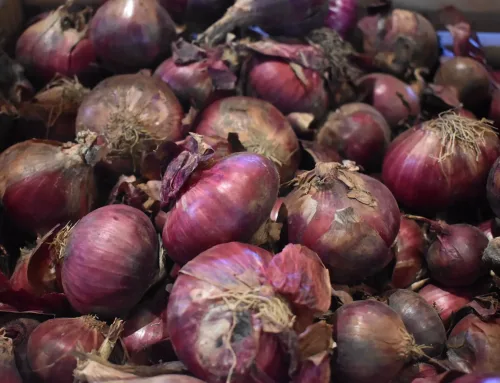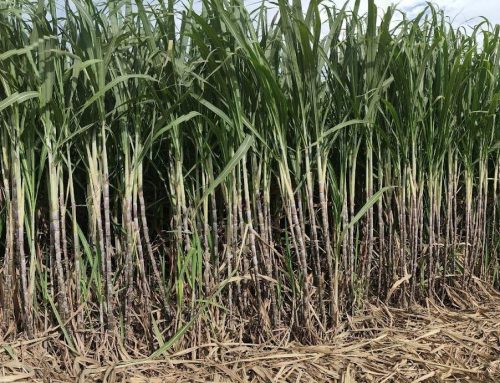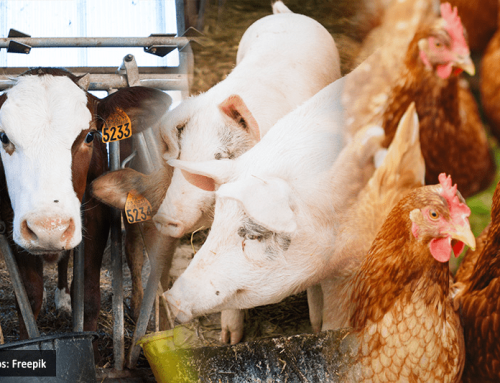In this Article
Discover Typhoon Julian’s impact on agriculture, rising vegetable prices, and the government’s relief efforts, including international aid and assistance programs to support farmers and rebuild damaged infrastructures across affected areas in North Luzon.

Typhoon Julian: Damage to Agriculture Infrastructure and Crop Losses
Typhoon Julian struck the northern Philippines from September 27 to October 4, 2024. According to the Department of Agriculture (DA) Regional Field Offices (RFOs), the affected regions included the Cordillera Administrative Region (CAR), Ilocos Region, Cagayan Valley, and Central Luzon.
On October 7, 2024, the DA Disaster Risk Reduction Management Operations Center (DA DRRM-OC) reported that the estimated agricultural damage caused by Typhoon Julian reached Php 607.38 million. The losses were primarily in rice production (70%), followed by irrigation systems (15%), corn (7%), and high-value crops (HVC), agricultural infrastructures, and livestock and poultry (8%). A total of 25,407 metric tons (MT) of agricultural products were lost, impacting 33,110 farmers across 17,344 hectares (ha), with 99% of the affected areas still having a chance of recovery.
The DA DRRM-OC report detailed the extent of the damage to specific crops and areas. Rice farms suffered damage across 14,836 ha, 99% of which have recovery potential. This resulted in 21,875 MT of rice losses, valued at Php427.65 million. Corn fields sustained damage to 2,006 ha, with 99% potentially recoverable, leading to losses of 2,778 MT of corn, valued at Php38.95 million. High-value crops, including upland and lowland vegetables, legumes, spices, and fruit trees, were affected across 358 ha, with 69% having a chance to recover, causing 755 MT of HVC losses, valued at Php31.13 million.
Damages to livestock and poultry include chicken, swine, cattle, carabao, goat, and sheep, with 1,558 heads affected valued at Php3.76 million. Irrigation systems, including National Irrigation Systems (NIS) and National Irrigation Projects (NIP), were damaged, resulting in losses valued at Php92.68 million. Damage to other farm structures which include greenhouses, mushroom houses, vermicompost facilities, administrative buildings, and animal houses, reached Php13.22 million.
Table 1. Summary of Agricultural Damages due to Effects of Typhoon Julian
|
Item |
Area (ha)/ Heads Damaged |
Volume of Losses (MT) |
Value of Losses (Php) |
|
Rice |
14,950 |
21,875 |
427.65 million |
|
Corn |
2,036 |
2,778 |
38.95 million |
|
HVC |
358 |
755 |
31.13 million |
|
Livestock & Poultry |
1,558 |
– |
3.76 million |
|
Irrigation |
– |
– |
92.68 million |
|
Other Farm Structures |
– |
– |
13.22 million |
Source: DA DRRM-OC, 2024
Typhoon Julian Spurs Price Increase in Vegetables Despite Early Harvest in Metro Manila
An early vegetable harvest in Northern Luzon helped mitigate the impact of Typhoon Julian, but it still led to price increases in Metro Manila markets. During a weekend forum on October 6, 2024, DA Assistant Secretary Arnel de Mesa reported that rice and vegetable prices in Northern Luzon remained unaffected, as farmers in Cagayan Valley, Ilocos Region, and Cordillera Region harvested approximately 44,000 ha of crops before the typhoon hit, leaving only 7,000 ha unharvested due to immaturity.
Heavy rains, strong winds, and flooding brought by typhoon Julian disrupted the delivery of produce, delaying the transport of vegetables to Metro Manila. Although the early harvest of crops mitigated losses in some areas, the residual effects of the typhoon, such as blocked roads and transport delays, still contributed to the price increases in affected markets. According to the DA Price Monitoring database, between September 26 and October 4, 2024, prices of selected vegetables in Metro Manila public markets increased by Php5 to Php30 per kilogram (kg), with cabbage experiencing the highest price increase at 71.43%.
Table 2. List of Vegetables and Corresponding Price per Kilogram (in Php)
|
Vegetable |
September 26, 2024 Price (Php) |
October 4, 2024 Price (Php) |
|
Bell Pepper Green |
120 – 280 |
130 – 280 |
|
Squash |
20 – 70 |
20 – 80 |
|
Pechay Baguio |
55 – 95 |
50 – 120 |
|
Carrot |
80 – 150 |
100 – 160 |
|
Cabbage |
35 – 85 |
60 – 100 |
|
Baguio Beans |
150 – 230 |
175 – 250 |
|
Broccoli |
330 – 550 |
340 – 600 |
Source: DA Price Monitoring, 2024
Government Response
In response to Typhoon Julian, the Department of Science and Technology (DOST), through PAGASA, closely monitored the storm and issued warnings and updates regarding its track, intensity, and potential hazards in affected areas. On October 4, 2024, President Marcos announced that the Office of the President would release Php25 million to support relief efforts for Typhoon Julian victims. The next phase of recovery will focus on rebuilding destroyed homes. Around 200 families received Php3,000 from the Department of Social Welfare and Development (DSWD), which also distributed 2,000 family food packs (FFPs) and water filters, while the Office of Civil Defense (OCD) provided 10 kg of rice per family.
The DA and its RFOs extended assistance to farmers impacted by Typhoon Julian. This aid included Php166.67 million worth of agricultural inputs such as rice, corn, and vegetable seeds, distributed by the RFOs in the Cordillera Administrative Region, Ilocos Region, and Central Luzon. In addition, the DA offered farmers loan assistance of up to Php25,000 through the Survival and Recovery (SURE) Loan Program from the Agricultural Credit Policy Council (ACPC), which is repayable over three years with zero interest. The Philippine Crop Insurance Corporation (PCIC) also provided funds to compensate insured farmers affected by the disaster.
International Aid
The United States (US), through the Department of Defense (DOD) and the US Agency for International Development (USAID), provided emergency assistance and air transport to the Philippines after Typhoon Julian. US Marines sent two KC-130J Hercules aircraft to deliver disaster relief supplies, including tarps, shelter kits, food, and other essential items, to impacted regions in Northern Luzon. This aid, coordinated with the Armed Forces of the Philippines (AFP), is part of a broader relief effort, with the US contributing around Php28 million (USD500,000) for emergency shelter, water, and sanitation.
Market Outlook
The agricultural market is expected to remain unstable following the impact of Typhoon Julian, which will be worsened by rains from the Intertropical Convergence Zone (ITCZ) now affecting Southern Luzon, the Visayas, and Mindanao. Vegetable prices in Metro Manila have already risen due to delayed deliveries. With rivers in key agricultural regions expecting flood risks, further delays in production and transport are anticipated, likely keeping prices elevated in the coming weeks. Government support remains crucial in aiding recovery efforts and stabilizing the market. Meanwhile, farmers are dealing with reduced income and higher production costs as they focus on repairing damaged infrastructure.
References: Arceo, A. (2024, September 27). Signal No. 1 up due to Tropical Depression Julian; rapid intensification possible. Rappler. Retrieved October 7, 2024 from https://www.rappler.com/philippines/weather/tropical-depression-julian-update-pagasa-forecast-september-27-2024-5pm
Arceo, A. (2024, October 1). Super Typhoon Julian exits PAR but may reenter. Rappler. Retrieved October 1, 2024 from https://www.rappler.com/philippines/weather/super-typhoon-julian-update-pagasa-forecast-october-1-2024-11am
Argosino, F. (2024, September 29). Julian intensifies into a severe tropical storm as it moves over Philippine Sea. Inquirer.Net. Retrieved October 7, 2024 from https://newsinfo.inquirer.net/1988058/julian-intensifies-into-a-severe-tropical-storm-as-it-moves-over-philippine-sea
Carlos, R.A. (2024, October 4). PBBM to grant P25-M cash aid to Batanes typhoon victims. Philippine News Agency. Retrieved October 4, 2024 from https://www.pna.gov.ph/articles/1234741#:~:text=MANILA%20%E2%80%93%20The%20Office%20of%20the%20President%20(OP)%20will%20provide
DA DRRM-OC. (2024, September 27). Bulletin No. 5 on Super Typhoon JULIAN. DA DRRM OC Facebook Page. Retrieved October 7, 2024 from https://www.facebook.com/dadrrmopcen/posts/pfbid0k3YZMwxy2Ybpa4WAVpzRmixw3AaQDEUqZm1VyThrjLijsdg5YQu9t4VCBdwfA1Nal
DA Bantay Presyo. (2024, October 4). Retail Price Range of Selected Agri-Fishery Commodities at NCR Markets – Friday, 4 October 2024. DA Price Monitoring Database. Retrieved October 7, 2024 from https://www.da.gov.ph/wp-content/uploads/2024/10/Price-Monitoring-October-4-2024.pdf
DA Bantay Presyo. (2024, September 26). Retail Price Range of Selected Agri-Fishery Commodities at NCR Markets – Thursday, 26 September 2024. DA Price Monitoring Database. Retrieved October 7, 2024 from https://www.da.gov.ph/wp-content/uploads/2024/09/Price-Monitoring-September-26-2024.pdf
Mayuga, J.L. (2024, October 7). After habagat, typhoons, ITCZ brings more rains. Business Mirror. Retrieved October 7, 2024 from https://businessmirror.com.ph/2024/10/07/after-habagat-typhoons-itcz-brings-more-rains/
Rocamora, J.A.L. (2024, October 5). US brings emergency aid to ‘Julian’-hit northern Luzon. Philippine News Agency. Retrieved October 7, 2024 from https://www.pna.gov.ph/articles/1234860#:~:text=MANILA%20%E2%80%93%20The%20United%20States%20government%20is%20providing%20emergency%20aid
Santos, J. (2024, October 5). Typhoon Julian’s damage to PH agri swells to ₱551.81 million. Manila Bulletin. Retrieved October 7, 2024 from https://mb.com.ph/2024/10/5/typhoon-julian-s-damage-swells-to-551-81-million
Taliping, A. (2024, October 6). Presyo ng bigas, gulay hindi pinasirit ni ‘Julian’. Abante News. Retrieved October 7, 2024 from https://www.abante.com.ph/2024/10/06/presyo-ng-bigas-gulay-hindi-pinasirit-ni-julian/








